Bob Sample Tank: New Zealand's unsuccessful debut
Under other circumstances, New Zealand could, in the old tradition, turn to Britain. Nevertheless, the British at the beginning of the forties fought with Germany, because of which help to an ally could not become a priority program. For this reason, the New Zealand military had to find a way out of the situation on their own. Moreover, one should take into account the very limited industrial and production capacities of the country. Naturally, in such conditions one should not expect any breakthroughs in the field of technology. Nevertheless, the result of the work is of great interest.
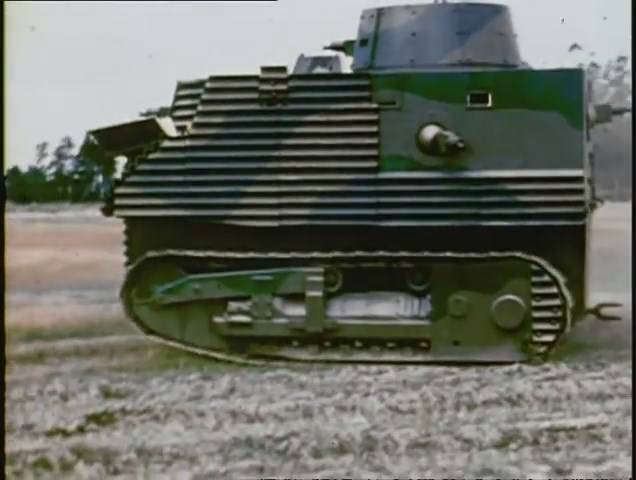
Bob Sample Tank on the test. A shot from the newsreel
In the first half of 1940, the Department of Public Works offered the military department an original approach to the creation of military equipment. The proposal implied the use of existing American-made Caterpillar D8 tractors, on which protection and armament should be installed. This approach, despite all its problems and shortcomings, made it possible to give the army at least some kind of armored vehicles. Having no particular choice, the commanders approved the new project and allowed to start building a prototype.
The development of the working draft and the assembly of the first sample of the new armored vehicle was entrusted to one of the workshops in Temuka. A certain T. Beck was appointed as the work manager. The technical task for the project was quite simple. It was necessary to take a ready-made D8 serial tractor of foreign construction and modify its design, primarily through the installation of new units. After that, the civilian car was supposed to become a model of armored vehicles with small arms.
As the basis for the new "tank"An American-designed crawler tractor was selected. Caterpillar machines of type D8 (before 1937 - RD8) of early series in a significant amount were purchased by New Zealand for use in agriculture and other non-military areas. Due to the relatively large number and due to good characteristics, it was these tractors that were proposed to be used when creating the first New Zealand model of an armored fighting vehicle.
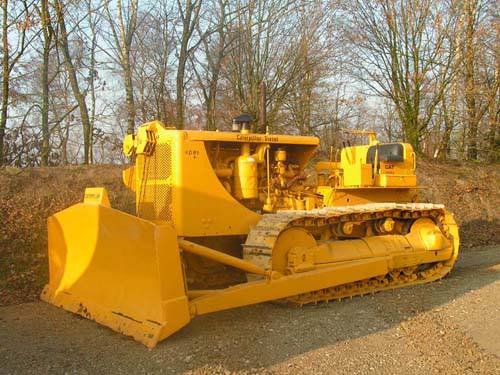
The Caterpillar D8 tractor is a US-made bulldozer. Photo by Chriscomachinery.com
The tractor D8 was a typical representative of its class of equipment, created in the mid-thirties. Used tracked chassis with large metal tracks. The guide and drive wheels performed the functions of road wheels. In addition, between the rollers on the longitudinal beam was installed six rollers of small diameter on each side. In front of the car there was a engine compartment with a partially covered engine, and the rear was given to accommodate the tractor driver. Depending on the model and equipment, the tractor could be equipped with a cab closed at the top or receive uncovered seats. The tractor was equipped with an 150 horsepower engine, which made it possible to use it as a towing vehicle for various equipment, a bulldozer, etc.
As part of the New Zealand tank creation project, the base tractor has undergone some changes. T. Beck and his colleagues rightly reasoned that the traditional layout of such equipment does not correspond to military use. For this reason, the driver’s workplace has been moved forward from the rear of the chassis. Now the driver had to be to the left of the engine, which was covered with a light casing.
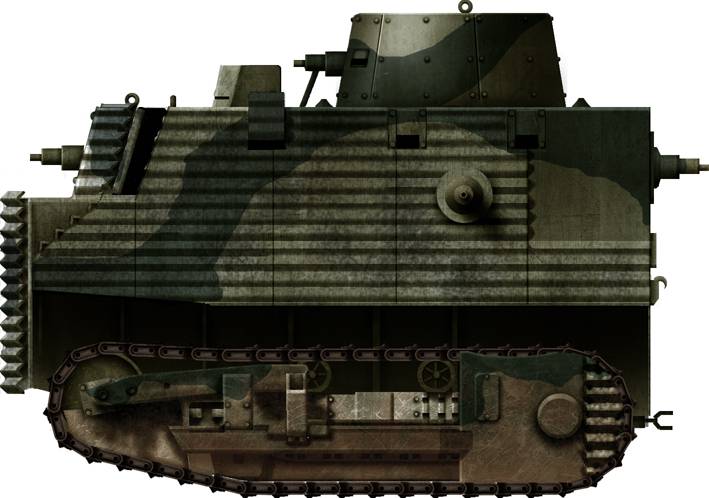
Modern reconstruction of the appearance of the armored vehicle. Figure Tanks-encyclopedia.com
On top of the existing chassis mounted demonstration case of wood and plywood, designed to show the customer. This design of the first version of the case allows us to consider the sample under construction in the middle of 1940 of the year as a running model. At the same time, at the early stages of the project, a hull structure was created, which later did not undergo significant changes. In particular, the shape of a full-fledged armored corps corresponded to the contours of the wooden unit.
In front of the car appeared a rectangular casing, necessary to protect the engine. Behind the short bonnet there was a polygonal protruding part of the frontal sheet in which one of the machine guns was to be placed. Two additional box-shaped units were placed on the sides of the engine, which led to the appearance of fenders. In the left unit was placed the driver's workplace, in the right - the arrow-commander. The central and aft parts of the hull had a simple box-like shape. On the roof should have been placed a tower in the shape of a truncated cone.
Some features of the project have not yet been fully defined. In particular, it was necessary to determine the type of weapons. The authors of the project proposed to equip the machine 37-mm cannon and several machine guns, the type of which the customer had to determine, based on their capabilities. Also considered the possibility of using multiple machine guns, providing the maximum possible sector of fire.
Already 16 June 1940, the running model of the tank showed the representatives of the army. The military was surprised by the large size of the resulting machine: taking into account the tower, its height reached 3,65 m. Nevertheless, subject to the requirements for protection and armament, the army was ready to accept such equipment. The authors of the project received approval to continue the work.
For about a month, the workshop refined its development, equipping it with a steel case. Due to the lack of armor steel in these works had to use structural. In the case there are several installations for mounting machine-guns. With artillery weapons there were serious difficulties. Despite all the efforts, the 37-mm gun could not fit in the existing turret. Nevertheless, despite the failure of some plans, the car was again shown to the military.
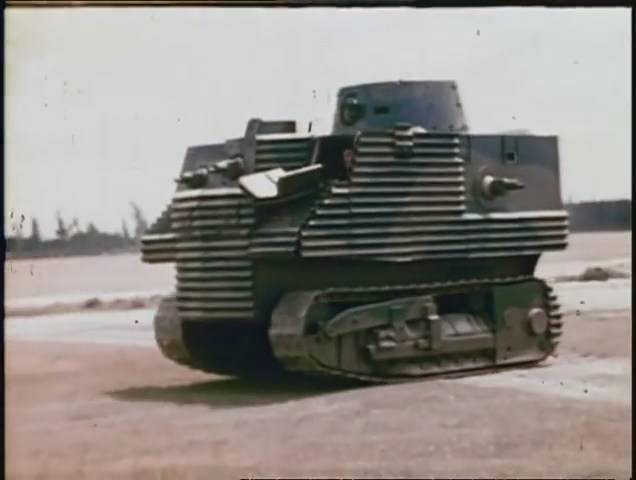
The car on the test, visible driver's hatch. A shot from the newsreel
The absence of a cannon led to the requirement to remove the turret. In addition, the military did not accept the mobility of the machine. On rough terrain, the prototype could not develop high speed. In addition, there were problems with overcoming various obstacles. This led to the requirement to recycle the undercarriage and increase the driving speed as much as possible. A separate reason for the claims was the lack of booking. The customer wanted to give the tank protection from 20-mm guns, but New Zealand did not release the required metal parts. Ordering reservation from Australia was impossible, since it also worked on its military projects and did not have excess production capacity.
A new stage of finalization of the combat vehicle continued until the end of 1940 year. During these works, the final appearance of the tank was formed. Later, some changes were made to the project, but they were mostly insignificant in nature and were associated with production technologies. The used ideas and materials did not allow to fully meet all customer requirements, but still ensured obtaining acceptable characteristics.
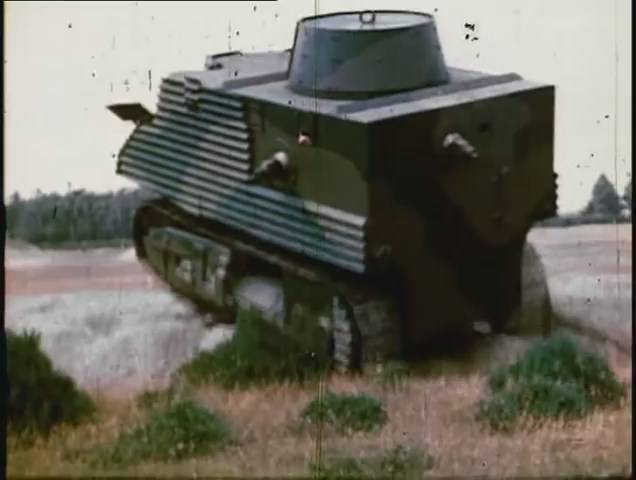
Overcoming obstacles. A shot from the newsreel
Updating the project of the second half of 1940, did not affect the general features of the hull structure. At the same time, protection has been strengthened. New Zealand did not release the armor and did not have the opportunity to order it, because of which the protection of the tank was strengthened with the help of grooved rolled panels that were quenched. The sides of the car themselves had a thickness of 8 mm, additional panels - 12,7 mm. Checks showed that such panels withstand shelling from a machine gun rifle caliber and, unlike conventional steel, can provide at least some protection to the crew and machine units. With the help of grooved panels covered the engine compartment, the cheekbones of the central unit with machine-gun installation and the sides of the case.
It was decided to arm the tank with six Bren rifle-caliber machine guns. Two machine guns were placed in ball mounts in the front and right sides of the front sheet. Two more machine guns were located in the sides, with a shift to the stern. The fifth and sixth machine guns were placed on installations in the turret and the stern sheet. The crew had ammunition in the form of 25 thousand cartridges in standard box stores. For storage of stores intended several racks in different parts of the machine.
In accordance with the requirements of the customer has been redesigned chassis. The forward guiding wheel of the caterpillar propulsion device was raised above the ground level, which was to a certain extent to increase the possibilities for overcoming obstacles. The stern part of the chassis was covered with additional plates of the corresponding form. The engine remained the same, and a new gearbox was added to the transmission.
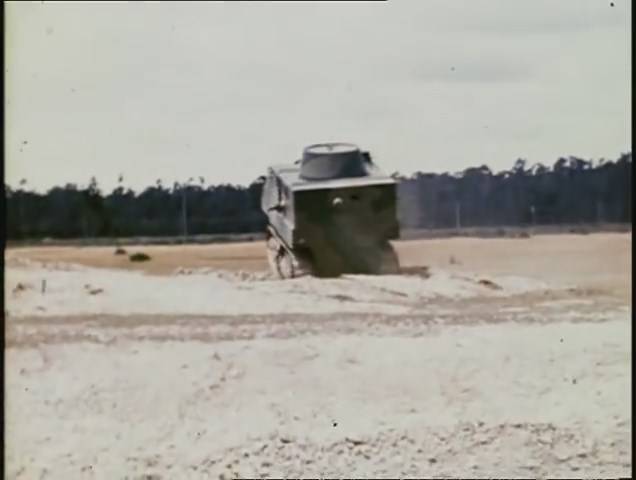
The tractor chassis allowed us to expect acceptable throughput. A shot from the newsreel
To manage a promising New Zealand tank was a crew of eight people. In the left front of the hull housed the control post with the driver's seat. Directly behind him was a mechanic who monitors the work of the power plant. To monitor the road the driver had to use the hatch in the front sheet. In a combat situation, the lid rose up and closed the opening, allowing observation through the viewing slot. The use of weapons was the task of six machine-gunners, one of whom was also the commander of the machine. The commander-gunner was placed at the starboard side symmetrically to the driver. Above its place on the roof there was a small turret with a viewing device. Three other machine gunners were placed at the sides and the stern, another one - in the tower. The central frontal machine gun was to be controlled by the sixth machine gunner, for whom a lying workplace was organized. On the hood of the engine was placed a metal heat-shielding unit, on which there was a mattress, which was the seat of the machine-gunner.
The design of machine-gun installations, as well as viewing slots along the hull perimeter, allowed the crew to observe the surrounding space and search for targets. It was proposed to get inside the car using a single stern hatch, directly above which one of the machine gun installations was placed. Other means of access to the combat compartment were not provided.

Bob Sample Tank descends from the slope. A shot from the newsreel
The tank on the basis of a serial tractor had a length of 4,2 m, a width of 2,7 m and a height of 3,3 m. The combat weight reached 25 t - approximately 10 t heavier than the original Caterpillar D8 tractor in the base configuration. By updating the transmission and undercarriage, the maximum speed of the armored car reached 25 km / h. On rough terrain, depending on the various features of the landscape, the speed did not exceed 8-10 km / h. Power reserve - at least 100 km. The placement of weapons made it possible to sweep almost the entire space around the vehicle, including while simultaneously firing a single target with several machine guns.
At the end of 1940, the first prototype of a New Zealand tank with “armor” and weapons was delivered to the Bernem military base on South Island, where they would have to pass regular tests. At the test site, the car showed acceptable mobility, however, new problems were made clear. Due to the specific design of the undercarriage, the tank swayed too much on the move, which is why target shooting was extremely difficult. In addition, the army recalled its desire to equip a tank with artillery guns. If this was not possible, then the tower should have been completely dismantled.
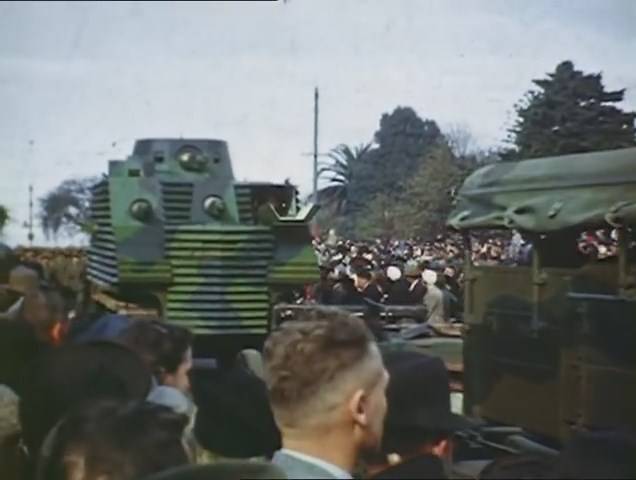
New Zealand armored vehicles during one of the 1941 spring parades. Newsreel
Tests of the end of 1940 of the year showed that there was some progress in the project, but it became clear that the work was seriously delayed. Because of this, it was decided to reduce the order. Now the military wanted to acquire not six tanks, as originally planned, but only three. Having studied the existing car, the military left not the best reviews. In their opinion, such a model of armored vehicles was a real step back, during the First World War. In addition, the project managed to “eat” as much money as would be enough to purchase or build two or three Universal Carrier armored personnel carriers. Nevertheless, the authors of the project soon received the go-ahead for the assembly of two new armored vehicles.
Over the next few months, the workshop of Temuka, under the direction of T. Becca, completed the re-equipment of two other tractors. Except for some minor differences, they looked like the first prototype. The power plant, chassis, protection and armament were the same.
In the early spring of 1941, specialists began preparations for the first major "operation" with the participation of the newest tanks. On April 10 a military parade was scheduled in Wellington, in which the first tanks of New Zealand were to take part. In early May, a similar event was planned to be held in Auckland. Before participating in parades, the crews were instructed: to avoid changing gears while driving in the parade. Performing such a procedure could lead to a short stop of the machine. Moreover, she could even stand on the spot, spoiling the solemn events.
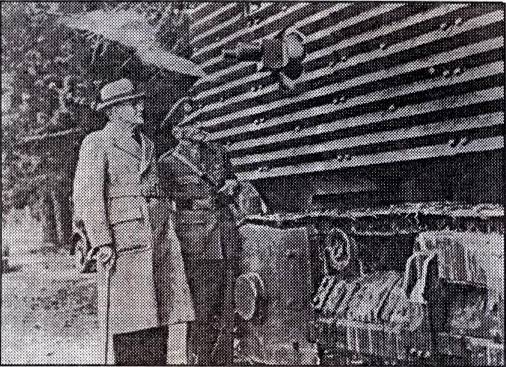
Bob Sample (left) inspects a new technique. Photos of Karev A. Shpakovsky V. "Tank of Bob Sample or New Zealand" NO "" // "Technique and Armament"
Fortunately, both parades passed without technical problems. At the same time, the people and the specialists who saw the new equipment reacted without enthusiasm to it. According to some reports, the tanks were quite surprised by the representative of the United States who was present at one of the parades. And the news that the basis of this miracle technology serial American designs, shocked him.
It was thanks to public demonstrations that the first New Zealand tank received the name, under which it later gained worldwide fame. On behalf of the then head of the Ministry of Public Works, armored vehicles were called "Bob Sample Tanks."
In June 1941, the military, disappointed in the new project, decided to stop all work. Further development of the project should be stopped. Already built armored vehicles required to transfer the troops. Construction of new samples was excluded. Soon the army took three armored vehicles, after which preparations began for the final tests.
In October of the same year, fire tests of armament and defense were held at a base near Christchurch. The 1000 machine gun shots showed the firepower of the machine, after which the booking checks began. It was found that bullets without an armor-piercing core cannot penetrate the tank's defense, however, when firing machine-gun installations or viewing slots, small lead particles from destroyed bullets can get inside the crew compartment.
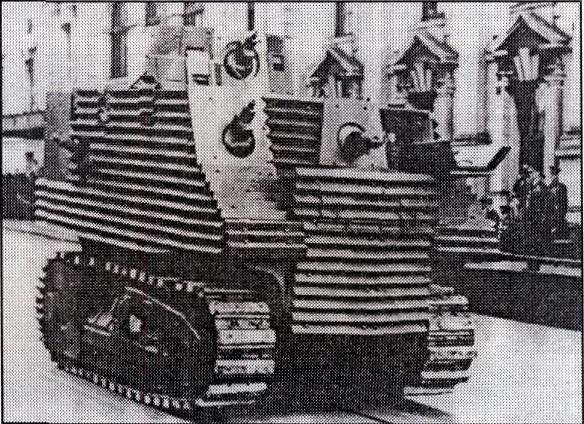
Tank at the parade in Auckland, May 1941. Photo by Karev A. Shpakovsky V. "Bob Sample Tank or New Zealand" NO "" // Technics and Armament "
According to the test results, the sixth turret machine gun was once again recognized as unnecessary. In January 1942, two cars were sent to the workshops to dismantle the tower, instead of which it was necessary to install a cover for the roof of the building. The removal of the towers lasted several months. Modified equipment returned to the army only in April.
As far as we know, the first New Zealand tanks were used very limitedly and managed to take part only in some army exercises. In addition, there is information about the use of this technique for cleaning trees at one of the army bases. Due to the further development of events in the Pacific theater of military operations of the Second World War, “Bob Sample’s tanks” did not have the opportunity to participate in real combat operations. But, as is clear from their design, this could not be considered a problem.
In the future, the military finally became disillusioned with tanks of unusual design, because of what they decided to disarm them and to deprive of the reservation. By the beginning of 1944, all three tanks had again become tractors. Two tanks were undergoing disarmament in Burngam, where bulldozers were built on their basis. The third returned to the original configuration of the tractor. On this story unique combat vehicles over. Former tank chassis continued to develop a resource in the role of tractors and bulldozers. By this time, New Zealand had received a certain number of tanks and other British-made vehicles, which differed from their own design with higher characteristics. Comparison of domestic and imported equipment even led to the appearance of jokes and cartoons in the press.
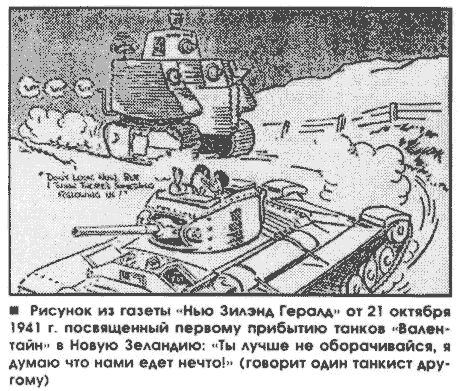
Caricature dedicated to the rearmament of the New Zealand army. Armor.kiev.ua
18 machine guns from three tanks returned the army. Armor cases, towers, etc. They were sent to Temuka, where they were thrown into a landfill. Soon, the Christchurch Department of Public Works asked for corrugated panels to be sent to him. As far as is known, these parts were transferred to the Department, however, the profit from their sale for scrap was only able to compensate for the cost of transportation. The remaining units later went to the smelter.
Working in extremely difficult conditions, T. Beck and his colleagues were able to create an original and unusual design of an armored vehicle based on the existing serial tractor. Having no experience in the creation of military equipment, the New Zealand designers made a number of mistakes and miscalculations, the elimination of which took some time. As a result, due to congenital and acquired problems, the project was not of high quality, which, among other things, led to a twofold reduction in the order for serial construction of equipment. In addition, the military reacted to the finished "Bob Sample Tank" without enthusiasm, and did not actively exploit the equipment received.
New Zealand’s first project in the field of tanks, even with certain reservations, cannot be called successful. Nevertheless, he nevertheless allowed to establish the non-viability of certain ideas and form the right views on the development and operation of armored vehicles. In addition, despite all the setbacks, the “Bob Sample Tank” took its place in the history of armored vehicles of the world along with some other similar projects showing what engineers and military are capable of in the face of serious constraints.
Based on:
http://armor.kiev.ua/
http://militaryfactory.com/
http://tanks-encyclopedia.com/
http://modelist-konstruktor.com/
http://tankinfo.ru/
http://chriscomachinery.com/
http://christchurchcitylibraries.com/
Kareva A. Shpakovsky V. Tank Bob Sample or New Zealand “NO” // Technique and Armament, 1999. No.3
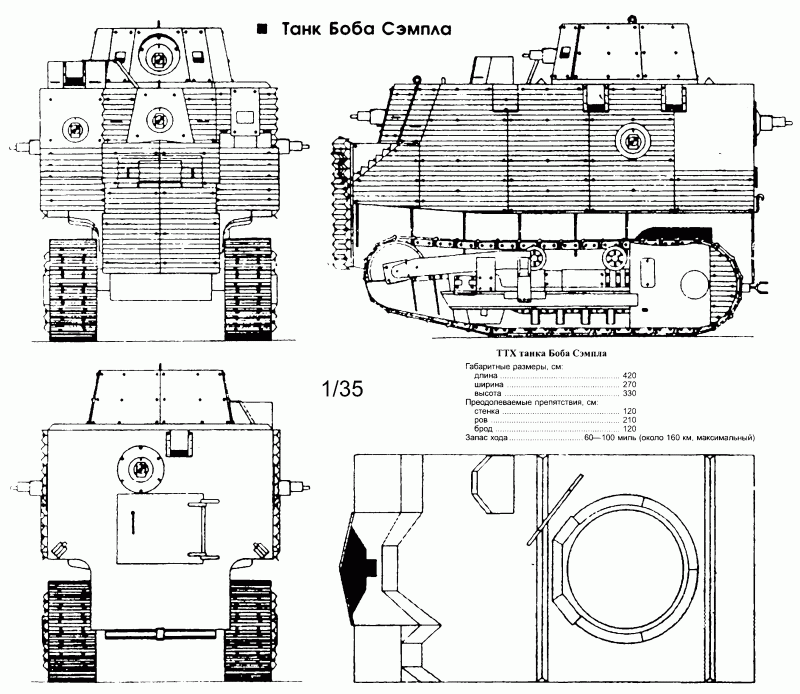
Information